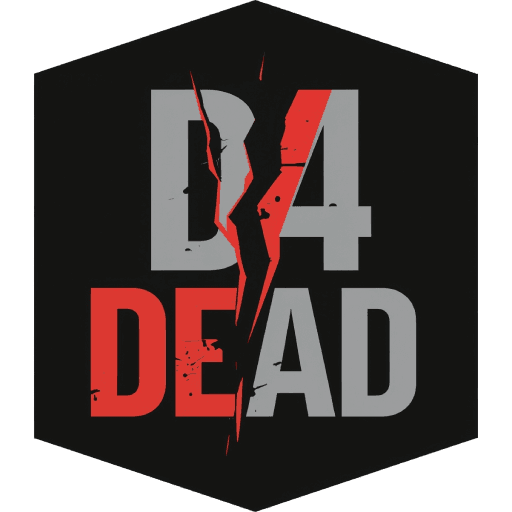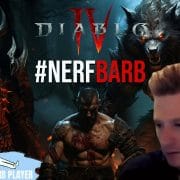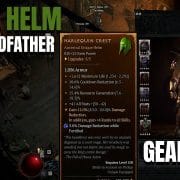Diablo 4 is set in the dark and gritty world of Sanctuary, where the forces of Heaven and Hell constantly battle for control. The game’s environment is vast and varied, featuring a range of distinct regions including corrupted forests, ruined towns, and ancient crypts. Players will explore this richly detailed world, encountering diverse factions and uncovering the deep lore woven throughout the game.
The core setting of Diablo 4 centers on Sanctuary, offering a mature and immersive landscape that expands on the series’ traditional themes while introducing new challenges and conflicts. This setting serves as a backdrop for the player’s journey, blending classic gothic horror with fresh narrative elements. The organization of the world into notable locations allows players to engage dynamically with the unfolding story and the many enemies they face.
Players can expect to find a richly layered world that is both familiar and innovative, where the environment itself plays a key role in storytelling. From the haunting ruins to bustling settlements, the setting supports Diablo 4’s focus on player choice and exploration.
Key Takeways
- The game takes place in Sanctuary, a dark and immersive fantasy world.
- Different regions and factions add depth to the game’s environment and story.
- The setting supports a strong narrative and varied gameplay experiences.
Core Setting of Diablo 4: Sanctuary
Sanctuary serves as the central world in Diablo 4, characterized by its diverse environments and rich lore. It is a sprawling realm where different climates and factions influence the player’s experience. Important locations within Sanctuary offer unique landscapes, cultures, and challenges tied closely to the game’s narrative.
Overview of Sanctuary
Sanctuary is the Mortal Realm, a vast and complex world where humans, monsters, and supernatural forces coexist. It features a harsh and unforgiving landscape filled with dangerous creatures and hidden threats. The world is deeply influenced by the ongoing struggle between celestial and demonic powers, with dark magic and ancient forces shaping much of its atmosphere.
The realm is also the birthplace of key story elements, such as the presence of Lilith, a central figure whose legacy affects much of the game’s conflict. Sanctuary is designed as an open world, allowing players to travel seamlessly across different biomes and face varied challenges in an immersive environment.
Key Regions and Biomes
Sanctuary is divided into six distinct zones that offer unique climates and enemies. These include:
- Fractured Peaks: A cold mountainous starting zone inspired by Gothic horror.
- Scosglen: Dense forests and rugged terrain, home to Druids and wild creatures.
- Dry Steppes: A desert wasteland marked by conflict and desperation.
- Hawezar: A swamp infested with dark magic and criminals.
- Kehjistan: Desert and rainforest zones, plagued by cultist activity.
- Nahantu: A jungle and red-rock canyon area introduced in an expansion.
Each zone presents its own ecosystems and cultural influences, encouraging exploration and strategic thinking in combat.
Major Cities and Landmarks
Sanctuary contains several major hubs and landmarks that serve as centers for quests and lore. Key locations include:
- Kyovashad in Fractured Peaks, serving as an early hub for players.
- Cerrigar in Scosglen, connected to the Druid heritage.
- Ked Bardu in Dry Steppes, a base in a war-torn region.
- Zarbinzet in Hawezar, a refuge for criminals and dark cults.
- Gea Kul in Kehjistan, a stronghold against demonic forces.
- Kurast in Nahantu, tied to past battles against the Prime Evils.
Noteworthy landmarks include the ancient Tree of Whispers, which holds deep magical significance and is linked to the lore of Sanctuary and Lilith. These cities and sites anchor the player in the ongoing story and provide key strategic points throughout Diablo 4’s world.
Notable Locations, Factions, and Influences
Diablo 4’s setting features distinct regions and characters that shape its complex narrative. Various factions vie for power within these areas, while specific zones act as stages for collaborative player events. The game also draws heavily from its predecessors, integrating lore and symbolic artifacts that connect past and present storylines.
Factions and Powerful Figures
The world is dominated by key factions like the High Templar order, representing the forces of light and order. Opposing them is the Dark Prelate, a shadowy figure tied to darker, corrupt influences. The Struggler and the Skull Knight embody forces caught between these extremes, often influencing the shifting balance of power.
Other groups such as the Triune Apostate and the Host of Chaos embody chaos and rebellion, challenging both order and darkness for control over Sanctuary. Notable individuals like the Hawk of Light and entities clad in Berserker Armor influence regional conflicts with their specialized powers. These factions contribute unique challenges and alliances that impact player progression and world events.
Collaboration and Event Areas
Certain locations serve as hubs for player interaction and large-scale events. Areas like Hawezar and the Dry Steppes feature world bosses such as the Blight Warden or mysterious figures like Death in Hawezar, drawing players into cooperative battles. These zones offer dynamic objectives, including Helltide events and quests tied to factions like the Blood for Money cult.
Events often revolve around capturing or defending key points, such as Waypoints or Altars of Lilith, linking player activity to the game’s narrative progression. Collectibles and unique zones like the Teganze Canyon or Totem of Ursus also serve as focal points for exploration and teamwork, enriching the open-world experience.
Influence of Past Installments
Diablo 4 incorporates many elements from previous games, cementing its continuity. The tone and themes recall Diablo 3 through familiar set items, unique armor sets like Thorns of Penitence, and legendary artifacts such as the Lion of Arreat. The integration of enemies like the Watcher in the Wilds and the Wraith Lord reflect recurring monster archetypes.
Plot threads touch on prior storylines, such as the rise of the Zakarum and the aftermath of prime evil conflicts. Players encounter remnants of fallen heroes, as seen with trophies and gear inspired by earlier heroes, along with locations like Kyovashad and Kurast. This blend of old and new creates a rich narrative tapestry that honors the Diablo legacy.



